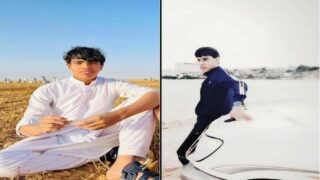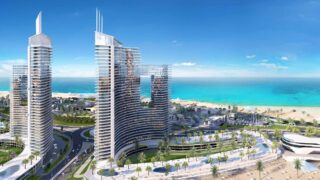The motto of one of the Egyptian Salafist television channels reads: “A channel that leads you to paradise.” The paths to paradise branch out into a diversity of Salafist movements, which intersect, proliferate, coexist and compete with each other at times. At the end of the day, however, all of these paths denote a general environment that one could say is deep-rooted.
The first division of the general Salafist movement is the largest. It comes in an organizational form and is socially active through organizations that are supervised and regulated by the law on NGOs. One well-known organization is the Religious Association for Those Dealing with the Quran and the Sunna, which was founded in 1912 by Mahmoud Khattab al-Sobki. The organization is dedicated to helping orphans and deprived families, and providing health care through a large number of clinics affiliated with its mosques. Moreover, It governs institutions that teach the preachers — known as daaiya — who deliver sermons in mosques affiliated with the Ministry of Awqaf.
This organization has more than 5,000 branches throughout the country and has enjoyed, since its establishment, unbridled Saudi support. It is not involved in political activities, yet its projects and services — which address the needs of a large spectrum of citizens — serve to promote the Salafist movement’s political candidates. The second most notable association is the Organization for Ansar al-Sunna al-Mohamediya, which was founded in 1926, two years prior to the formation of the Muslim Brotherhood. This organization is also active in the social field and is steadily supported by the Gulf. It publishes Al-Tawhid magazine, a publication that is well-known among Salafist circles.
The second division of Salafist groups is not set within an organizational frame. It consists of a group of Salafist preachers who address the people through mosque sermons or Salafist satellite channels, which were permitted by former President Hosni Mubarak’s regime as a part of his conflict with Muslim Brotherhood. Mubarak tried to drain the Muslim Brotherhood of its popular support and orient its supporters toward religious movements that were thought, at the time, to be non-politicized. The most prominent and influential preachers on the political Salafist scene are currently Mohammad Hassan, Mohammad Hussein Yaacoub, Abu Ishak al-Heweny and the rest the Shura Council of Salafist Sheikhs — known as Shura al-Ulamaa and comprising 10 members. The scholars are playing a vital political role in ensuring popular support for the political Salafist movement.
Politicians
The third division and the most important piece of the Salafist puzzle are the Salafist groups that combine social and preaching activities with political activities and a desire to rule. These groups are relatively large and encompass, for example, the Salafist Dawah group in Alexandria. This latter group laid the foundation for the Al-Nour party, which is the second-largest Egyptian political party, according to the results of the parliamentary elections.
The Al-Nour party won more than 25% of seats in Parliament and helped mobilize Egyptians to ratify the constitution. The establishment of the Salafist Dawah group dates back to the 1970s, when a group of youth refused to join Muslim Brotherhood and established a “religious group” whose name changed twice. It was first known as the “Islamic Group,” and the name was later change to the “Salafist Dawah.”
The head of this group is referred to as “the guardian of the Salafist Dawah” — where Dawah is an Arabic term meaning call. At first, the group’s activities were limited to delivering sermons about Islamic teachings in some mosques in Alexandria and amassing supporters. In the aftermath of the January 25 revolution, however, the group gained momentum and ended up establishing the first Salafist political party. It therefore became a key player on the Egyptian political scene. It deviated from Muslim Brotherhood’s course by offering a dialogue initiative to the opposition, without prior coordination with the former.
The majority of these groups are located in Alexandria — the stronghold of the Salafist movement — and in poverty-stricken provinces such as Matruh, New Valley, Faiyum and Beni Suef.
The fourth division is al-Gamaa al-Islamiyya, a group which engaged in violence in the 1980s and 1990s, until 1995 when it reconsidered its strategy. Al-Gamaa al-Islamiyya reemerged on the Egyptian political scene after the revolution and gained representation in Parliament via its popular support in the three poorest provinces of Upper Egypt — Minya, Asyut and Sohag.
The political wing of this group is the Building and Development Party (BDP), which won 11 parliamentary seats. Some of its members were even appointed to the Shura Council — which can legislate in the absence of Parliament — even though the party only won 7% of the total votes. Furthermore, a referendum was held to determine whether or not to disband the party, instead of increasing its powers.
The BDP has good ties with the ruling Freedom and Justice Party (FJP). The FJP has stood by the former’s side in every battle and went to great lengths to express its readiness to protect the BDP’s headquarters, which have been subjected to attacks by protesters. This group shares with the Muslim Brotherhood a sense of vanity, as they regard with contempt the majority of Salafists that are poor and uneducated.
Thus, al-Gamaa al-Islamiyya shares intellectual and moral commonalities with the Muslim Brotherhood. The ideological dissimilarity between al-Gamaa al-Islamiyya and other Salafist movements pertains to ideas about disobeying the ruler, which — in the case of al-Gamaa al-Islamiyya — took on the form of armed disobedience. The general conviction among Salafists is that disobeying the ruler is not permitted, even if he “stole their money and beat them.”
Founded in 2013 out of a split within the Al-Nour party, the Egyptian Homeland Party was established by Emad Abdel Ghaffour, President Mohammed Morsi’s social communication advisor and a man who is closely tied to the Muslim Brotherhood’s strongman, Khairat El-Shater. It is even said that Shater pushed Abdel Ghaffour to lay siege on Media Production City. Hazem Salah Abu Ismail is widely popular among Salafist youths. He is calm and presents himself through Islamic speech as a revolutionary leader, especially given the fact that he took a stance against the army’s power.
Another division of Salafists is the jihadist Salafism that is linked to al-Qaeda. These jihadists split from al-Gamaa al-Islamiyya and the Jihad Group in Egypt and established branches in the Sinai. They did not agree with strategic changes that these groups — which are the oldest in espousing violence — have implemented. The majority of these jihadist groups are comprised of Bedouins from the Sinai. These citizens were arrested and oppressed by the former regime, as they were accused of planning terrorist attacks in the city of Dahab and the Sharm el-Sheikh province. As a result, the relationship between these groups and the Egyptian security agencies, which had dealt with this issue in a legal manner, was marked by deep-seated feelings of revenge.
This is followed by less important movements, such as the Salafist Front, which resulted in the establishment of the People's Party. The latter was formed as a party that set itself apart from the rest of the Salafist movements. It includes a number of Salafists who participated in the revolution for personal reasons that differ from the general ideology of the Salafist movements. It seeks to form a front to run for parliamentary elections under the banner of the party, whose name was changed to the the Change and Development Party. The party is close to Abu Ismail, and coordinates with him within the Egyptian Nation Alliance.
Youth Salafists
There are some groups affiliated with Salafist movements that do not fall within the traditional framework. They can be called youth Salafist forces, and include groups such as Silvio Costa, which is named after the famous cafe. It is a group of youth that tried to break the Salafist stereotype. The group’s members made the Silvio Costa cafe, which is known for its rich customers, their meeting point. These young guys probably belong to the upper class, and they are trying to prove that they are in touch with the times and that they too can be “modern.” Their activity is limited to organizing social and development campaigns that connect them to the poor, through volunteer work. Via this method of operation, they have tried to disconnect themselves from politics.
The group did not provide any new theoretical or political views, aside from participating in revolutionary activities and standing in line with the January 25 revolution. Silvio Costa emerged during the revolution, along with other Salafist groups including the Coalition of Support for New Muslims, the Egyptian Islamic Youth Coalition, and Islam’s New Movement. Their media presence supersedes their actual popularity, and they have not taken any remarkable positions so far.
The so-called “Active Salafists” follow the latter. This is a group of Salafists in Cairo that joined the January 25 revolution early on. The Mubarak regime had fabricated a court case (involving the al-Waed Organization) against them, yet the judiciary acquitted the group before the revolution erupted. The most prominent members of this group are Mohammed Abdel Maksoud, Sheikh Fawzi al-Saeed and Sheikh Nashat Ibrahim. This group is loyal to the Brotherhood and supported them in the election and other political endeavors.
Finally ...
There are also groups such as al-Tabligh wa al-Dawah, which was established in India by Muhammad Ilyas al-Kandhlawi at the beginning of the last century. It emphasizes tawhid, prayer, the holy Quran and following God’s path. This group operates by sending out members to encourage people to pray in mosques and attend religious lessons. They do not talk about politics or criticize politicians, nor do they follow any strict group. They are present mainly in India, Pakistan and Bangladesh, and a group of them is based in Egypt. Among other, less significant groups, is the al-Salafiya al-Madkhaliya group, which is attributed to Muhammad binaman al-Jami al-Habashi. It is a Salafist group loyal to the regimes in the states in which it operates, and forbids any opposition to these regimes. The most prominent figures of this movement are Mahmoud Loutfi Amer (who issued a fatwa permitting the killing of Mohamed ElBaradei), Osama al-Qawsi and Mohammed Saeed Raslan. In Egypt, this movement had well-known connections to the security agencies.
Translated by Al-Monitor



